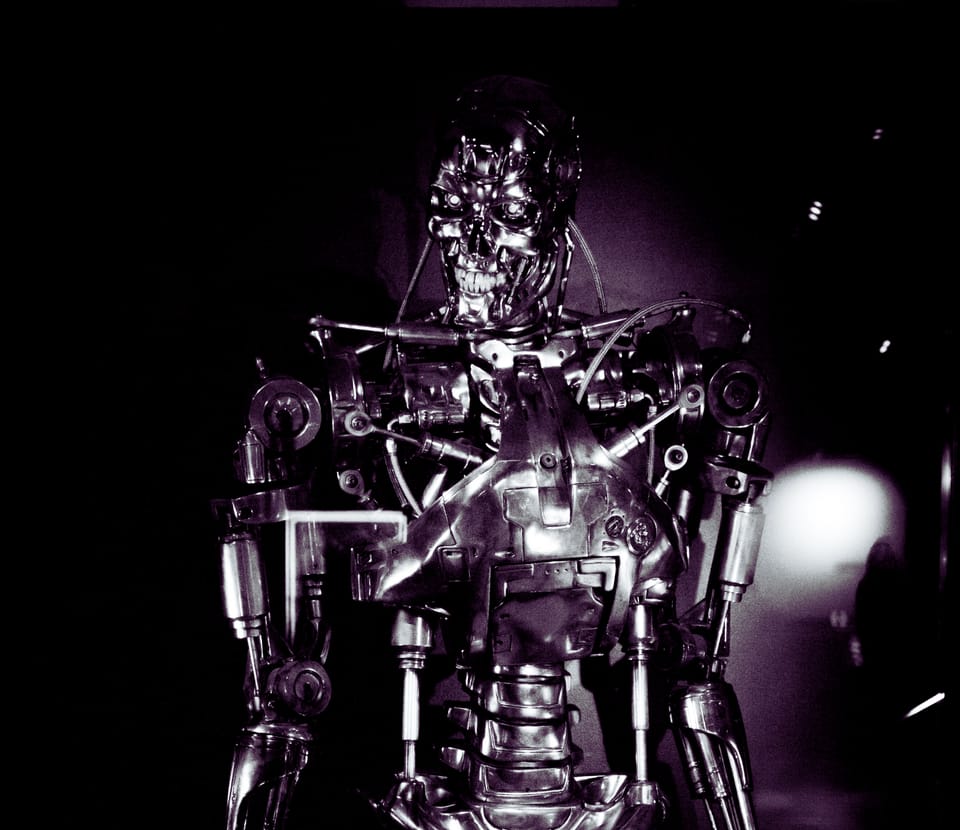How AI Is Rewriting the Future of Work

Wise up in 60 Seconds – Your one-minute roadmap to thriving when the bots clock in
- Automation is not one monolith. Think three overlapping waves – mechanical, digital, cognitive – each bigger and faster than the last.
- Displacement is real but not destiny. Up to 800 million jobs worldwide could be automated by 2030 – yet even more new roles may emerge under optimistic scenarios.
- Short‑term churn, long‑term upside. Employers expect 69 million jobs created and 83 million lost in just five years, a net loss of 2 %.
- Human advantage ≠ routine tasks. The safest skills marry deep domain expertise with creativity, empathy, and the judgment machines still fake.
- Learning speed beats learning once. The half‑life of job skills is sliding below four years; a constant re‑skilling loop outperforms any single degree.
- Policy & company choices matter. Training subsidies, portable benefits, and AI‑augmented workflows can turn disruption into productivity – or widen inequality.
- Your next promotion might be to “bot wrangler.” Prompt engineer, AI ethicist, automation product manager – titles that barely existed five years ago now headline hiring boards.
1. From Spinning Jenny to GPT‑4: A 250‑Year Crash Course
Automation anxiety is older than the word “automation.”
When the Spinning Jenny (1764) let one worker operate eight spindles, English weavers smashed the frames. The same storyline replayed during the steam engine, the assembly line, and the mainframe. What changes is scope: every generation’s machines gobble a wider slice of human tasks.
Economists often describe three waves:
- Mechanical automation (19th C.) – muscle replaced by steam, then electricity.
- Digital automation (1970s‑2000s) – clerical grunt‑work ceded to silicon; spreadsheets killed book‑keeping jobs even while creating analysts.
- Cognitive automation (2010s‑now) – algorithms write copy, draft code, diagnose disease. Generative AI is the first broad‑spectrum tool that creates as much as it categorizes.
GPT‑4 may not spin cotton, but it spins words – the raw material of sales emails, legal briefs, even bedtime stories. That’s why the “future of work” feels suddenly present.
2. What Exactly Can Be Automated?
Not jobs, but tasks. A surgeon’s day includes diagnosis, paperwork, empathy, and incisions. Machines nibble at each slice differently.
| Task Type | Automatable Today? | Example Tool |
|---|---|---|
| Routine physical | ✔ High | Warehouse robots, autonomous forklifts |
| Routine cognitive | ✔ Medium | RPA bots reconciling invoices |
| Non‑routine analytical | ▲ Growing | LLMs summarizing research papers |
| Non‑routine interpersonal | ◼ Low | AI mental‑health chat, still mediated by humans |
| Creative synthesis | ◼ Low‑Medium | Generative design, copy co‑pilots |
LLMs have dragged “creative synthesis” from moon‑shot to proof‑of‑concept. Yet edge‑cases betray limits: ChatGPT drafts a product brief in seconds but still hallucinates figures lawyers can’t risk.
The safe heuristic: If a task is spelled out by explicit rules, a bot will eventually eat it. If it hinges on tacit knowledge, social nuance, or crossing messy domains, humans hold the high ground, at least for a hiring cycle or two.
2.1 The Productivity – Employment Paradox
Every cycle, doomsayers predict a jobless future; every cycle, aggregate employment rebounds, yet distribution skews. Two forces collide:
- Productivity gains – cheaper goods free consumer income, spawning demand for fresh services.
- Laggard adjustment – skills, institutions, and wages lag behind tech, birthing the mismatch we read as unemployment.
MIT economists Daron Acemoglu and Pascual Restrepo show automation explained 50‑70 % of the rise in U.S. wage inequality since 1980.
Their takeaway: the type of automation matters. Robots that replace tasks without creating complementary “new tasks” think cashier kiosks erode wages. Automation that augments MRI machines needing skilled radiologists can lift incomes. The policy question isn’t “stop the robots,” but steer investment toward complementarity.
3. The Numbers: Displacement vs. Creation
3.1 Long‑range forecasts
The 2017 McKinsey Global Institute report put the upper bound at 800 million jobs potentially displaced worldwide by 2030 under its fastest‑automation scenario.
Importantly, McKinsey also modelled 555 million new jobs from rising incomes, aging populations, and tech spending. Net change: anywhere from –73 million to +375 million depending on policy choices.
3.2 Five‑year pulse check
Fast‑forward to the World Economic Forum’s Future of Jobs 2023 survey: executives now expect 69 million roles created and 83 million eliminated by 2027 – a 2 % contraction, but with gigantic churn.
The headline? Movement, not meltdown. Workers aren’t replaced wholesale; tasks migrate and job descriptions shapeshift. The pain concentrates in roles heavy on routine data handling (e.g., payroll clerks), while demand booms for AI specialists, cyber‑security analysts, and sustainability experts.
3.3 Early AI adoption metrics
Inside offices, adoption snowballs. Microsoft’s 2023 Work Trend Index found 75 % of knowledge workers already using AI at work, with 90 % saying it saves them time and 84 % claiming it sparks creativity.
That scale implies a two‑tier workforce: AI‑augmented professionals who ship more, faster—versus peers still ‘mano‑tooling’ tasks. Which side employers reward is obvious.
3.4 Inequality Isn’t Inevitable but It Is Probable
Automation’s gains often accrue to capital owners and high‑skill talent, while routine‑task workers face downward pressure. Studies tracking U.S. payrolls find industries adding robots saw wage dips for men without a college degree, while postgraduate wages rose.
Left unchecked, AI could amplify the existing “barbell” into a dumbbell—thin middle, heavy ends. That risks both social cohesion and market size for the goods the top buys. Denmark’s robot tax proposals and Spain’s digital services levies preview the policy backlash if gains feel zero‑sum.
4. The Skills Barbell
Automation shifts demand rather than erasing work. Picture a barbell:
- Left weight: Advanced tech & data fluency. AI engineers, prompt designers, data stewards, cyber‑risk auditors.
- Right weight: Deep human skills. Empathy, persuasion, critical thinking, cross‑cultural collaboration are traits expensive to automate.
- Bar in the middle: Domain expertise. Knowledge of biotech regulation, supply‑chain logistics, climate policy. Tech alone is dumb without context.
Mid‑level routine roles, call‑center agent, basic financial analyst, sit where the barbell is thinnest. They risk hollowing out unless up‑skilled toward either weight.
4.1 “Prompt literacy” – the new Excel
A decade ago, résumé lines boasting “Excel pivot‑tables” signaled white‑collar competence. Tomorrow’s equivalent might be “engineered prompts that cut report drafting time by 70 %.” Surveys already show employers ranking AI aptitude above traditional experience for new hires.
4.2 Rise of the “New‑Collar” Class
IBM popularised the term new‑collar for roles blending technical proficiency with soft skills, cyber‑security technicians, cloud admins, AI model ops. They typically require micro‑credentials rather than four‑year degrees, making the path accessible to career‑switchers. Employers from Google to Walmart now hire via skills tests or certificates.
4.3 Micro‑Credentials & Continuous Loops
If the job half‑life is 4 years, education must shift from front‑loading to drip‑feeding. Expect:
- Stackable certificates that combine into degrees.
- AR/VR simulations for hands‑on practice (robot repair in the metaverse).
- AI learning companions that personalize curriculum weekly based on labor‑market data.
Workers who treat skill acquisition like software updates, incremental and regular, surf the wave rather than dodging it.
5. Geography, Inequality & the Remote Wildcard
Automation is not location‑neutral. High‑skill metropolitan hubs soak up AI investment; rural and emerging markets risk brain drain. Paradoxically, remote work flattens geography, an LLM engineer in Lagos can contract for a Boston biotech but also exports competition. Wage arbitrage may widen gaps within countries even as it narrows some between them.
Policymakers confront an awkward trade‑off: encouraging automation to raise productivity, while cushioning displaced cohorts who often lack the networks or capital to
References
- McKinsey Global Institute. (2017). Jobs lost, jobs gained: Workforce transitions in a time of automation. Retrieved from https://www.mckinsey.com/featured-insights/future-of-work/jobs-lost-jobs-gained-what-the-future-of-work-will-mean-for-jobs-skills-and-wages
- World Economic Forum. (2023). Future of Jobs Report 2023. Retrieved from https://www.weforum.org/press/2023/04/future-of-jobs-report-2023-up-to-a-quarter-of-jobs-expected-to-change-in-next-five-years/
- Microsoft. (2023). Work Trend Index: AI at Work Is Here. Now Comes the Hard Part. Retrieved from https://www.microsoft.com/en-us/worklab/work-trend-index/ai-at-work-is-here-now-comes-the-hard-part
- Acemoglu, D., & Restrepo, P. (2022). Tasks, Automation, and the Rise in U.S. Wage Inequality. MIT Economics Working Paper. Retrieved from https://economics.mit.edu/sites/default/files/2022-10/Tasks%20Automation%20and%20the%20Rise%20in%20US%20Wage%20Inequality.pdf
- Wells, R. (2024, November 5). 71% of Employers Prefer AI Skills Above Experience in 2024. Forbes. Retrieved from https://www.forbes.com/sites/rachelwells/2024/11/05/71-of-employers-prefer-ai-skills-above-experience-in-2024/


Member discussion